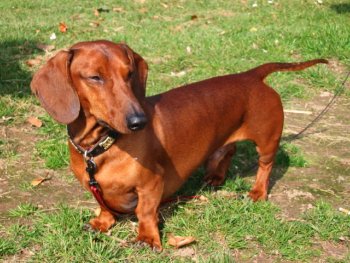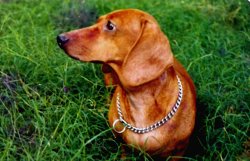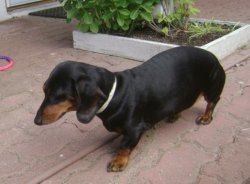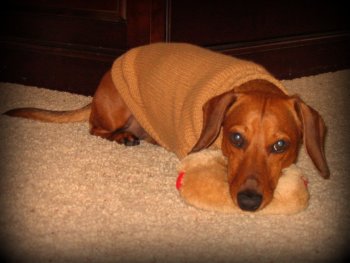The Dachshund Dog Makes a Playful and Clever Companion

Dachshund Dog
The Dachshund dog, also known as the sausage dog, has an extremely long body and short legs. The average Dachshund should live for around 12 years and an adult male should weigh between 20 and 30 pounds. The dogs were originally bred to hunt badgers, so they should have loose skin to avoid being caught in holes, a long nose for scent and flap down ears to make the head more streamline. In terms of temperament, they should be playful and clever.
History of the Breed
It is possible that there were Dachshund dog ancestors alive in Ancient Egypt as there have been excavations of short-legged dogs in tombs along the Nile. Bred to scent and hunt badgers, “Dachshund” is the German words for badger and dog put together. They were bred small and long to be able to access badger setts, but their ferocity in packs saw them used to scare larger animals such as wolverines and wild boar. The American Kennel Club first recognized them in the nineteenth century, and since then they have become popular pets for elderly people and families with small children.
Owning a Dachshund Dog

The main reason that Dachshunds are continually one of the top ten ranked dogs each year is that they are one of the few breeds who live well in apartments and small buildings. They can be fairly active indoors, but you will need to take them on a regular daily walk to help them burn off some of their extra energy. They have an incredible amount of stamina for a dog of their size and will happily play fetch for hours.
Who’s the Boss
Owners of a Dachshund dog will talk of how friendly they are, but also that they can be incredibly stubborn. This trait can make them hard to train and housebreak and you'll need to assert yourself as pack leader quite early on to make later obedience easier. They aren't hugely food motivated, and will only respond to human praise from people that they respect. Some Dachshunds turn on their owners if they feel that they can dominate them.
In terms of family make-up, Dachshunds do not make great pets for families with small children or other small pets, as they can react aggressively to even the slightest provocations. If you do have young kids, you need to introduce them to the dog very early on and impress on them the importance of good manners and pack leadership around the pet. Dachshunds, without correct training, can attack other small animals such as cats and rabbits. It will be important to socialize them at an early age, and if problems continue to separate the animals.
Dachshunds have a long species memory and to this extent they like to dig, which is why it will be important to get them outside at least once a day to let them get the digging out of their system. However, they can be aggressive towards strangers, so you will want to either find an isolated spot or keep them on a tight leash when you're out of the house.
Health Concerns

The main health problems affecting the Dachshund breed are those concerning the spinal column, and these result from the long spine and small rib cage that is part of the make up of the dog. These spinal problems can be enhanced by obesity, jumping and intense exercise, feeding and exercise are important. However, sometimes this will be a genetic disposition, so you will need to get hold of anti-inflammatory and pain medication.
Beyond the spinal issues, each Dachshund dog is prone to the same problems as other small dog breeds, such as heart disease, urinary tract infections and epilepsy. Regular check ups will help to keep these under control.

Return from Dachshund Dog to Dog-Breeds-Explorer Homepage